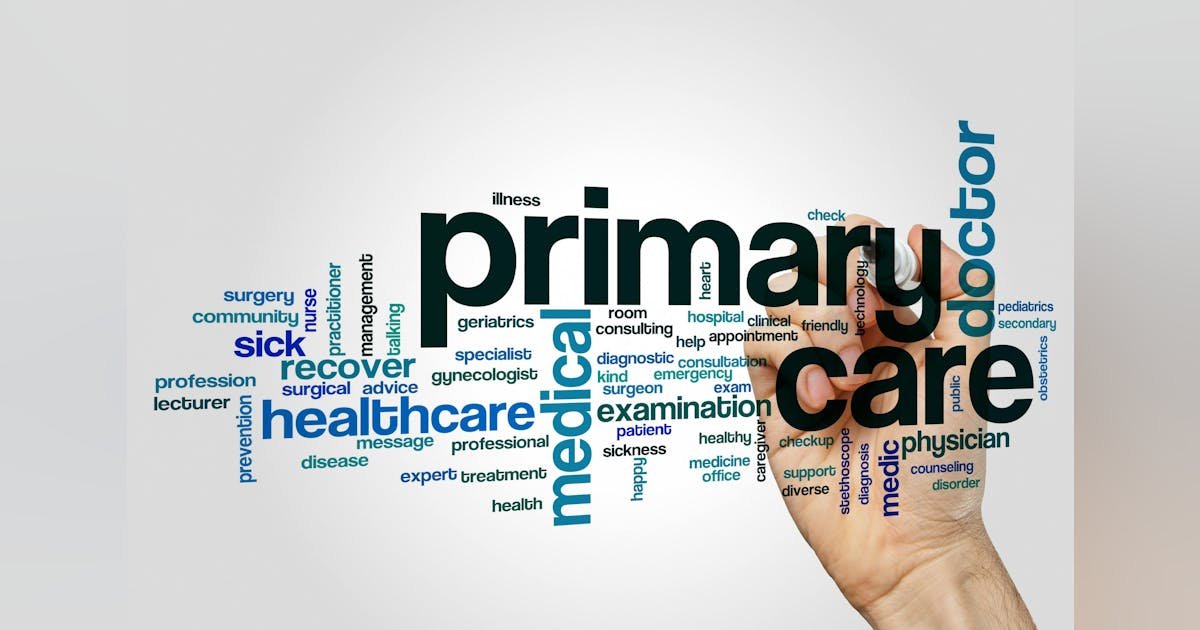A recent Health Affairs Commentary article details the evidence gaps “hindering optimal physician and advanced practice provider (APP) work organization in contemporary primary care delivery.” One of the authors, Lisa Rotenstein, M.D., M.B.A., medical director of ambulatory quality and safety at UCSF Health, recently spoke with Healthcare Innovation about the paper’s findings about the challenges involved in optimizing the roles of APPs and physicians in primary care settings.
Healthcare Innovation: At times, Healthcare Innovation receives conflicting press releases from professional societies about what is happening at the state level regarding the degree of autonomy granted to APPs. Your commentary paper has an interesting headline, “An Unclear Partnership: Key Questions About Physician and Advanced Practice Provider Collaboration in Primary Care.” What are some reasons the relationship is murky? Is it because it’s evolving so rapidly, and the research base hasn’t kept up with the changes occurring in the workplace?
Rotenstein: Our work is funded by the Physicians Foundation. Last year, we brought together a group of experts from across the healthcare industry to talk about what some of the key questions in this space were. Some of those experts were physicians, some were advanced practice providers, and some were healthcare executives. We outlined both what some of the key questions were and what some of the opportunities were.
This is an area that is part of our everyday practice. We can have these big-picture questions, but physicians and APPs work together in all of the different ways we describe already in the healthcare landscape. So with that, let me get to your question of why it is so murky. The first is because these partnerships have grown somewhat organically. The second is because, alongside the organic rollout of the partnerships, there has been a somewhat organic and parallel evolution of training for these groups. As we describe in the article, physicians have a really clear training path. We go to medical school, we go to residency, we acquire 12,000 to 16,000 hours of patient contact as part of that.
On the other hand, the education of nurse practitioners and physician assistants varies a little bit. Nurse practitioners typically get a master’s or a doctorate degree and then undergo clinicals before they go into practice.
Physician assistants also get a master’s degree, and they undergo rotations, oftentimes in a variety of specialties, including surgical specialties. Many of them actually have a lot of on-the-ground experience before they go to physician assistant school, and then they enter practice. A lot of their training is on the job in a particular specialty. Based on those different types of training, it’s less than clear what exactly the competencies of each group are and how that applies to primary care.
The second reason is that it’s actually pretty hard to do good research in this space. One could ask what team configuration would get us to the best patient outcomes. Is it when physicians and APPs work together as part of a team? Is it when they work independently? But for a variety of reasons that we go through in the article, it’s hard to do that kind of research. And lastly, the payment models don’t really incentivize one specific mode of collaboration, either independent, parallel team, etc.
HCI: What are some limitations of studies comparing health outcomes among patients cared for by physicians vs. APPs?
Rotenstein: There are a couple of main reasons for that. The first is that in any observational study, ideally you’d want to randomize, because otherwise, the patients that are currently getting care from APPs may be fundamentally different than those currently getting care from physicians. It’s hard to randomize in everyday practice, and I’m not sure that that would be ethical at this point. The second issue is that because of how APPs bill, it is often hard to see the work of APPs in claims data. For example, if APPs bill independently, they make 85% of what a physician makes. So that’s often not worth it for healthcare systems. Rather, they do something called indirect billing, where the services of an APP are billed under a physician’s name, and then that duo gets 100% of the rate. But that means that the APP’s name is not seen in the claims, so you essentially cannot measure the care that that APP is providing and link it to downstream outcomes.
HCI: One of the things the paper mentions is that not having clear roles can lead to frustration and even conflict between physicians and APPs. What is an example of those types of tension?
Rotenstein: For example, in a primary care practice, if a physician is considered the primary person seeing the patient, but a physician assistant ends up seeing them for more of their acute visits because they are available. There may be questions about who takes on questions that come in between visits, who takes on chronic disease management, who takes on coordination with specialists. That’s just one example, and the questions and conflicts likely vary by the particular practice model in a particular clinic.
HCI: One of the things I found interesting in the paper was the idea that in the future, automated EHR-based reporting or AI note assessment could provide an avenue through which to study this. Could you talk about that a little bit?
Rotenstein: So, as we talked about, currently there are limits to claims-based measures, and there are also limits to standard ways of evaluating clinical competency. Many of us undergo standard clinical exams in medical training. We take paper tests, but really, we all learn in practice, and that’s actually some of the argument made by professional societies representing APPs is that they accumulate many, many years of experience, so over time, the gap in knowledge and skills may narrow, but it’s hard to quantify that, and it would be expensive and unpleasant to administer exams over the years to members of the workforce. So one of the alternatives to that could actually be automated. For example, we can use EHR audit logs to understand the types of patients that each role is seeing, the types of diagnoses, the complexity of the encounters, and through that, get a sense of the types of skills that each member of the team has developed over time. This is both through EHR audit logs, where we look at the different patients that they have seen, and through large language models that can parse the content of notes.
HCI: Another thing the paper mentions is that there have been calls for reforming primary care payment with a focus on supporting team-based care delivery models. So are CMS’ Primary Care First model and ACO Primary Care Flex model potential examples of how to pay in the value-based care world for supporting team-based care?
Rotenstein: Yes, they are. We do think that paying a prospective sum for the care of a patient will allow us to deliver the primary care that all of us want to deliver. We want to deliver continuous team-based care to our patients, and right now, the fee-for-service schedule doesn’t really allow that, because essentially it pays for physician services, maybe a little bit on top of that, but certainly not for all of the members of the multidisciplinary team. So it’s exciting that some of these demonstration models are testing these kinds of payments specifically for primary care.
That said, one of the points that we make in the article that I’d like to emphasize is that the percentage of payments coming from these alternative models needs to be relatively substantial to get practices to shift their behavior. So if you have only 10% of your payments coming from a model like this, or as a prospective payment, that doesn’t allow you the buffer to hire additional team members and really change the way you work. And in fact, some of my colleagues have quantified that you need a greater percentage, specifically 63% of payments coming from capitated payments, in order to change the way that care is delivered toward a more team-based, holistic approach.
HCI: What about the patient perspective? Your paper suggested that we need more evidence about how patients think about being seen by a physician, APP, or a combination of the both?
Rotenstein: Yes, we do, and there are a few reasons for that. The first is that ultimately, the reason we deliver care is to make patients healthy and happy, and that’s particularly important in primary care. There’s evidence, first of all, about the importance of continuity of care in terms of actual health outcomes, in terms of seeing the same provider over time. Now there’s less evidence about whether you see the same physician and a physician assistant, for example, who works very closely with them, and they’re very much a team, versus the benefit of having somebody readily accessible, even if that is not the person you regularly see. So that’s just from the health outcomes perspective.
We should also figure out how patients feel about the different members of the team. And it may be that the answer is complicated. It may be that patients find advanced practice providers really great in some areas. For example, we hypothesize that some of the more standard work of primary care related to chronic disease management can be taken on by multiple members of the team. And in some instances, and they’re often instances you can’t anticipate in advance for yourself, you may need the really complex diagnostic decision-making that is part of our medical school training. In those situations, it is possible that a physician is more optimal for those circumstances, but this is an area that is ripe for investigation, and actually we hope to look at the physician perspective over time. With funding from the Physicians Foundation, we are doing qualitative interviews of physicians and APPs to try to understand some of the qualitative perspectives around these issues.
HCI: Given that there’s a shortage of primary care clinicians, especially in rural parts of the country, it seems like some of this is being played out in state legislatures, where they’re making decisions about who can practice where and with what autonomy. Maybe they’re not the best ones to be deciding about the relationships between the physicians and APPs….
Rotenstein: Maybe I’ll answer your question another way. I’ll just say that it is being played out in practicality, because, as we note in the paper, nurse practitioners have independent practice authority in 27 states. In 11 states, physician assistants don’t necessarily need a supervising physician. So the needs of the local healthcare environment dictate what kind of practice models end up being prevalent in that particular area. So yes, you are right that in some ways, the state legislatures sort of open the door to the different types of practice models that are subsequently available.
HCI: And perhaps they’re under pressure because they’re hearing from constituents that there’s not a provider within 50 miles of them.
Rotenstein: Then you get into situations where one can have an academic perspective, one can be waiting for the perfect data, but as you allude to, sometimes the most important thing is to get our patients care.
HCI: Is there anything else from the commentary that you’d like to stress?
Rotenstein: I’ll just say that there is a real opportunity here to improve the data evidence around these issues, and then also to come together to solve some of these questions. In particular, the question I’d like to highlight is about what are the skills and competencies that it takes to be a primary care provider? And that is different than what are the skills it takes to be a physician, a nurse practitioner, physician assistant, but to the extent that across specialties and across provider type we could start having that conversation, I think it will help us solve some of the downstream issues, because we’d be starting from the same understanding of the needs of primary care.








